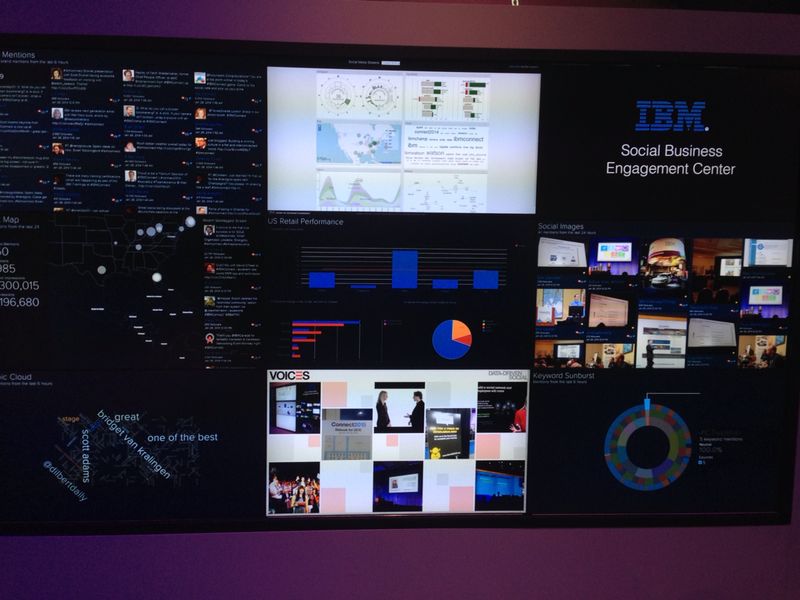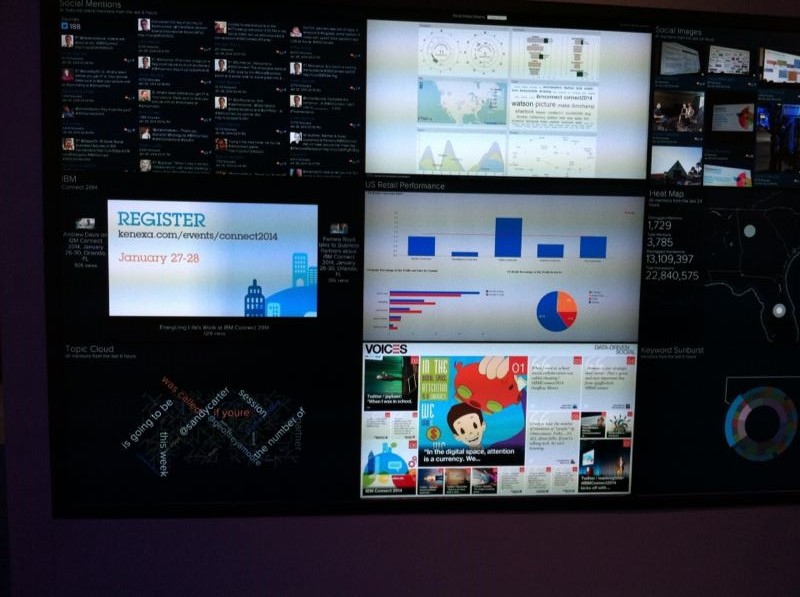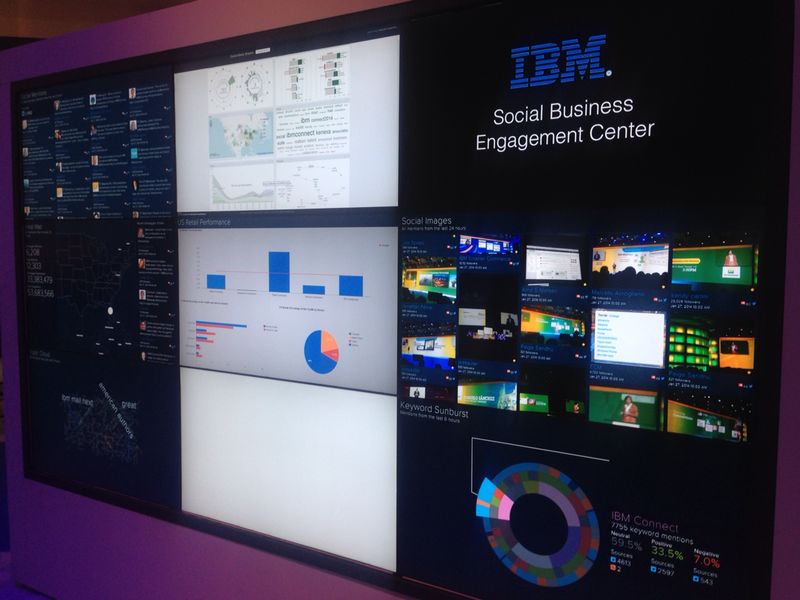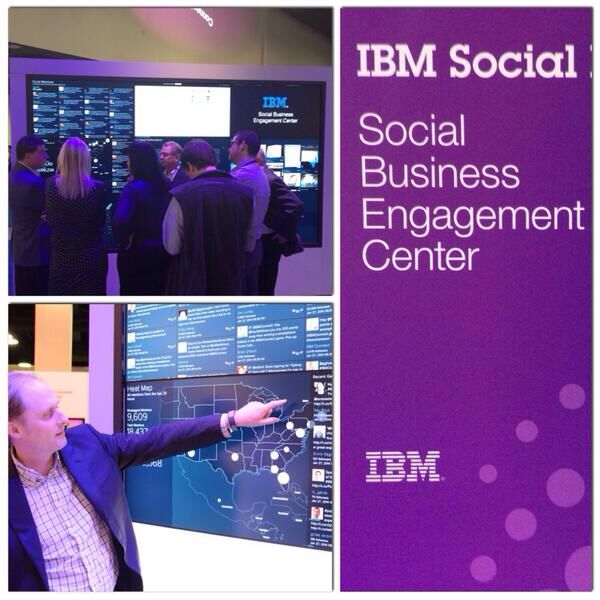Interview published on the Skuid blog on August 17, 2017.
Michelle Killebrew knows a little something about digital transformation.
She led the strategy for the social business division at IBM, where she expanded the product line from 89 to more than 400 products to help the company’s clients understand and successfully undertake digital transformation. This covered everything from internal collaboration solutions and communication systems, talent management and analytics, digital marketing solutions, infrastructure security, and information technology (IT)—everything an organization needs to transform to meet the customers’ high digital expectations. In her time at IBM, she was passionate about helping to build that story so that IBM’s customers would know where to begin the daunting journey of enterprise transformation.
Not only has Killebrew won multiple awards as a senior marketing executive, she’s been a TEDx speaker and written numerous articles on the topic of digital marketing. I spoke with her over the phone about her newest role, trends we are seeing in digital transformation, and the growing role of citizen developers in the enterprise.
Skuid: Let’s talk about your background a little bit. What is your current role?
Michelle Killebrew: I’m the chief marketing officer for a food technology company called Nomiku. The founders of Nomiku created the first ever sous vide (precision cooking) immersion circulator for the home. The story goes that the founder was working at a Michelin-starred restaurant in New York and had a desire to bring home one of these sous-vide machines they keep in the kitchens of all of the top restaurants. But they were thousands of dollars and really bulky. While on the first date with her now husband, who’s an astro and plasma physicist, they created the first home immersion circulator. This was in 2010. They’ve since had two successful Kickstarters. They’ve been invited to the White House for an honored Maker Award. Now, we’ve just launched our third generation product.
It’s really exciting because it’s bringing Internet of Things technology into the kitchen. But their focus has always really been on the food; with a mission of “how can we eradicate every obstacle between you and a delicious plate of food?” Which is why we’ve just launched our food program, which is revolutionary because of its RFID inventory management capability as well as future opportunities around health data. For me, it’s a wonderful opportunity to be at the crossroads of health, food, and technology, and how digital transformation of all kinds is making its way into every aspect of our lives, including how we prepare our meals.
Before that, I was working in financial services—wealth management to be specific—where they found me to lead their digital marketing transformation. As you may know, digital transformation is especially challenging for the financial services industry at-large. Given the regulations that financial service organizations are bound to, keeping up with consumer expectations has been difficult.
For me, digital transformation is all about customer-centricity regardless of industry, and customer’s expectations are shifting dramatically towards instant, personal, seamless experiences — B2C and B2B.
While we’re talking about digital transformation, it’s a topic that’s on a lot of people’s minds—not just in the tech industry, but in established enterprises. I’m curious if, in your experience, you see digital transformation as a trend that’s been around for a few years and then in a few more years it may go away? Or do you think it’s something that’s here to stay?
It’s certainly not a trend. I think that things will continue to change as technology changes and consumer expectation changes. What digital transformation is today may not be what digital transformation is tomorrow. It’s interesting if we look back at the transformations that have happened in business history, whether it’s through, say the advent of the telegraph or just in terms of condensing that communication cycle. Or in our more recent history with e-business, when we introduced email and the internet to how we operate on a standard business practice perspective—digital transformation is yet another one of those moments in time where we are pivotally shifting to meet consumer expectations which is advancing rapidly.
Part of this, of course, is the fact that we’re all walking around with smartphones in our pockets. We expect to be able to access information, from corporate information to customer information, to any type of information, at the swipe of our fingers. Those expectations are shifting how businesses need to meet their customers’ demands. It’s easy for customers to switch to their competitors very easily with the next click of a mouse or the next touch of their fingers on their mobile phones. There is less loyalty for loyalty’s sake. You really have to win that loyalty from a customer, and integrate that customer experience across all of your channels, to make that experience seamless and desirable for your customers. There’s a really high expectation. I think that that’s really where the pain points of digital transformation are coming from.
We’ve obviously seen it this year in 2017. We’ve been talking about the retail industry shift over a number of years. But I think we saw the closure of 2,000 retail stores this year. We’re starting to see, just now, that it’s impacting areas that I’m certainly focused on with food and technology. Especially with the acquisition of Whole Foods by Amazon and some of the other food and technology integrations, with people ordering their groceries online. I think that in other industries, some of this change has been happening a little bit less visibly than perhaps retail. But it’s really coming to the foreground in terms of customer expectations and how they pivot their companies to meet those expectations.
How do you see digital transformation affecting the way employees use technology within the enterprise?
Well, similarly to consumers, employees have high expectations from their employers as well. They expect that they’ve now been groomed with a technology experience. Think about your Apple experience and your iPhone. If you go into an enterprise and you’re still leaning in to lengthy, archaic database systems to get your work done, it’s frustrating. You really don’t have the patience for it from a productivity perspective, especially when you’ve got this “Apple” experience for your personal life. We’ve seen this extensively in enterprise technology; just the expectations of employees with how they’re able to communicate, whether it’s their email systems or their instant messaging systems, how they’re able to collaborate in real time. Document sharing, especially over locations, because you don’t often need to be in the same location. How can you bring those collaboration solutions into a ubiquitous format so that you can collaborate with your colleagues all over the globe?
It’s certainly something that’s just part of that social business category, the solutions for employee empowerment and collaboration. Ultimately, if your employees aren’t happy, your customers will not be happy because your customers are being served by your employees. They’re the frontline of your brand expression and that customer experience. I think over the last several years, digital transformation has really brought home the importance of employee engagement and meeting the needs for their technology requirements. And making sure that the work they are doing is fulfilling and that they’ve got those growth paths. Because it certainly impacts the bottom line.
Do you feel digital transformation is a luxury, or a necessity? And is it strictly for larger, more established enterprises? Or do you feel that’s something that even smaller companies can achieve?
I think it’s for survival. All companies will need to address it. It’s actually probably more difficult for a large company because they’ve got established systems and databases. You really have to think through your data flow and how your systems and processes and people are actually speaking to each other in effective ways to embrace new ways of doing things. For small companies, though, it may be taken for granted that they don’t need to worry about it. But that’s not true. We see this even, say, with small, local restaurants that need to adopt food delivery. Whether it’s on a Grubhub or an Eat24, customers want to be able to either order their food and have it ready for them to pick up immediately, or have it delivered straight to their door. These are just customer behaviors that small businesses need to adapt to as well. Just really being accessible to their clients and thinking through how their clients want to be able to engage with them for communication or for services. That’s why there is a huge market for meal delivery services, like a Blue Apron our our Nomiku Sous Chef Meals, consumers preferences have shifted. They’re extremely time constrained, but want to know what’s in their food, where it came from and have it ready-to-eat on their terms.
Is it something that should always be led by sales and marketing teams? Or, is it something that IT is starting to lead the charge on?
We’ve seen industry-wide that Marketers have really carried the torch. But that’s because they’re customer-facing, and the requisite to change has really been born by the customers’ expectations. That said, for digital transformation to effectively stick within an organization and to be carried-off successfully, it really needs to happen collaboratively between all of the departments. There may be aspects of digital transformation that may be explicit to the department.
Thinking through IT, for instance—it may be restructuring the database or bringing on different technical solutions. However, all of the departments need to collaborate to make sure that they’re not transforming in the wrong directions, that their transformation is happening in a synchronized fashion, so that it truly becomes just as effective across the organization, and that information is flowing. Because the customer experience traverses all departments. Your customer doesn’t care that your call center’s on one system and your email system may be on another. They just know that they’re speaking with you as a brand and want to be able to have their problem resolved as quickly as possible. It doesn’t matter which department spearheads the initiative. It needs to be collaborative between the different departments. There needs to be a clear vision as to what digital transformation means for that particular organization, milestones and roadmaps for how we’re going to get there. Then a real understanding that legacy key performance indicators (KPIs) and measurements of success of before may not be the same KPIs that you need to measure in the future.
If you’re operating differently and you’re then optimizing how that engagement may be expressed, you need to look at a different set of optimized KPIs to reach that goal. And then look at your foundational KPIs and make sure that you’re really focusing on profit and growth margin, if that’s where you are in your digital transformation. Or, if you’re trying to really protect and grow market share, and you have a longer-term strategy to survive the digital transformation and then focus on growth and profit at a later date. That’s one thing that I think is really challenging is that you’re going through and changing systems and practices. But a lot of the reporting and how business has been run and measured in years past needs to be shifted as part of that transformation.
What’s the role of citizen developers when it comes to digital transformation and enterprise technology?
It’s an interesting question. I think the concept of the citizen developer in every single department outside of IT is going to be standard. We’re going to grow into that whether it’s developing marketing apps or HR apps. We can’t operate in waterfall anymore, right? Everything has to be agile. For everything to be agile, you’re going to have a lot more of this pod-style development where you’re going to be able to iterate fast and test it. And then once it proves that it’s worth expanding upon, bring that into a more formalized development process. Because that’s how we’re going to be able to evolve in a very competitive digital transformation world where everybody’s trying to figure it out. Nobody’s written the guidebook because everybody’s going through it together. Quite honestly, that guidebook is going to look different for each organization.
That said, I think that we need to be mindful of not going rogue. As we know, in today’s technical and digital world that we live in, cybersecurity is one of our biggest concerns. We just need to be very mindful that while we may be trying to iterate and develop very quickly, that we have really robust sets of security regulations, especially around customer data or employee data, and to be mindful of the potential risks. I certainly think that the citizen developer is going to be the core to how we reorganize our teams and how we function as we go through this transformation and into the future. But the risk right now is that we are shifting so quickly that we need just to be very mindful of the potential risks that may come along with that.
Dreamforce is coming up in November. Since you live in San Francisco, is it a conference you usually attend? Will we be seeing you there this year?
I’ve been in the lucky position of being able to attend a lot of the satellite events over the years, which has been great for me. I still feel like I’m connected to the community but not necessarily in the throes of the conference itself. The great thing about Dreamforce and being at the amazing event that it has become—and quite honestly it’s truly remarkable, the production level of the event that it’s become …I don’t know how they pull it off—is that there are so many ways to participate in that content, even if you’re not here. People are syndicating or writing a perspective or bringing video live from the event floor. Whether you’re able to make it or not, it’s a wonderful place to bring this whole concept of digital together and get some great minds and hear some perspectives. I’m looking forward to see what the biggest news is this year!
Charlie Moss has written for The Atlantic, The Washington Post, The Week, Slate, MOJO, VICE and other publications. He has a passion for comic books, Star Wars, and The Beatles.






